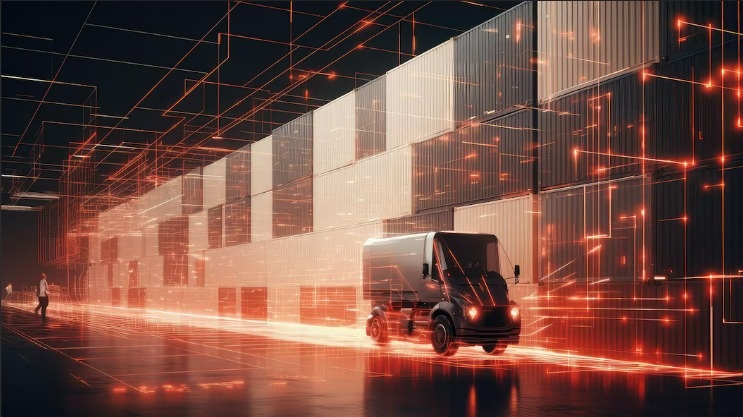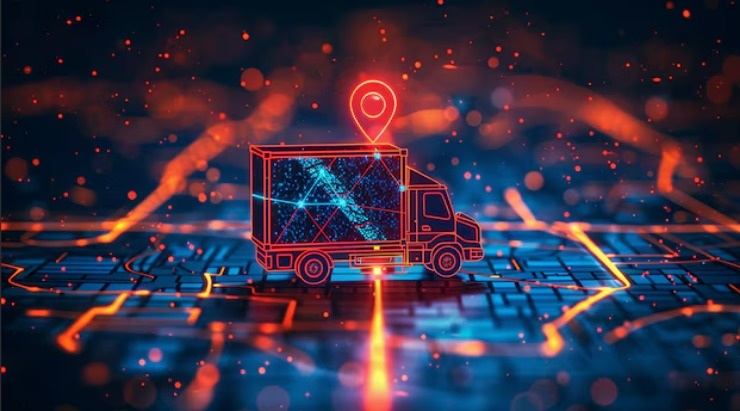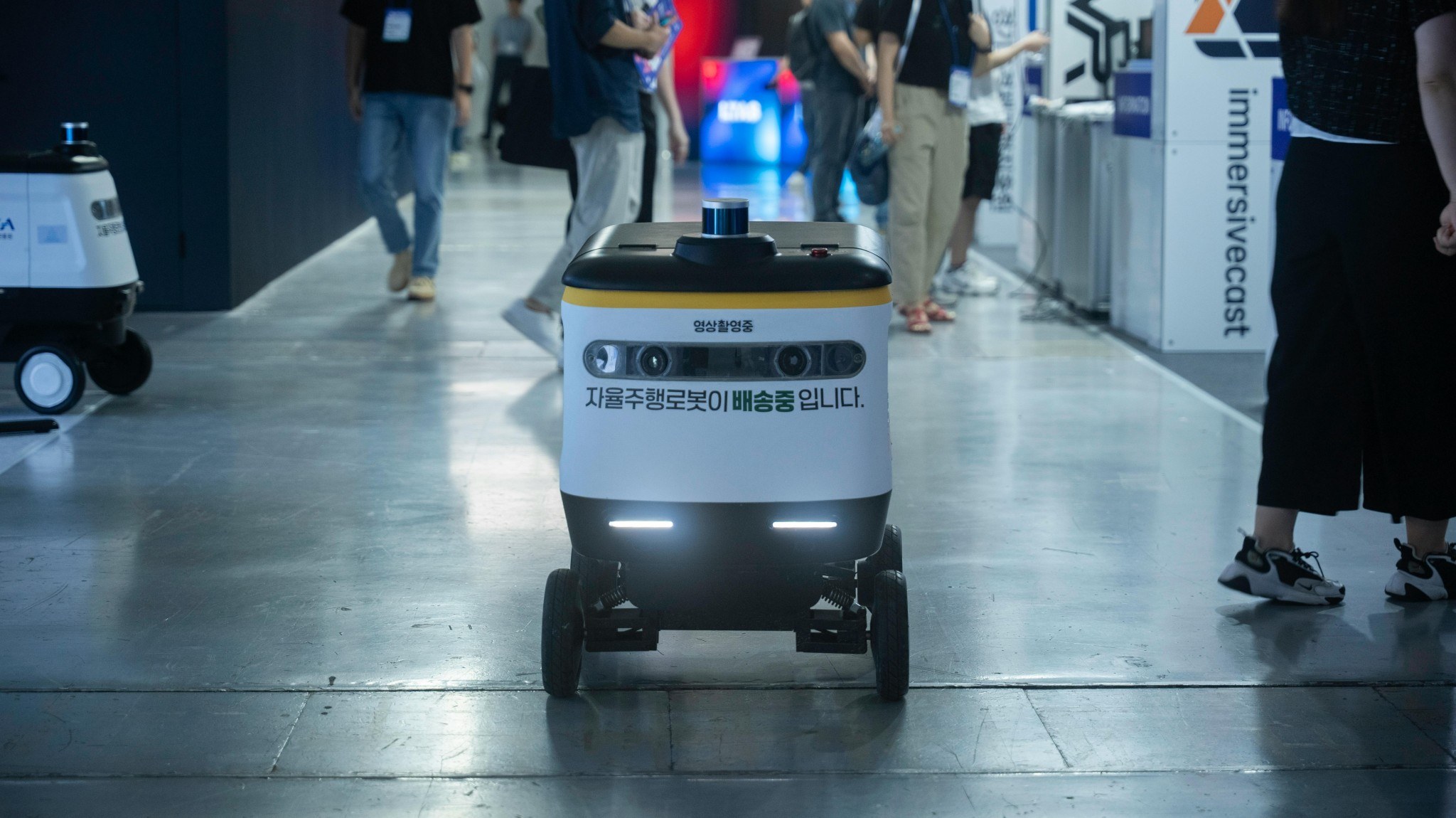The logistics and freight industries have undergone significant transformations over the past decade, and at the heart of these changes is artificial intelligence (AI). By automating processes, optimising routes, and predicting future trends, AI is not just enhancing efficiency; it is reshaping the entire supply chain landscape.

In this article, we’ll explore how AI is revolutionising freight and logistics, the various applications within the industry, and the benefits it brings to people in Freight.
Let's Get Straight To The Point
AI is revolutionising the freight and logistics industries by automating processes, optimising routes, and predicting trends. Key applications include autonomous vehicles, AI-powered fleet management, supply chain optimisation, and robotic process automation (RPA).
AI enhances efficiency, reduces costs, and improves safety, but challenges like data security, integration with legacy systems, and high initial costs remain. The future of AI in logistics includes IoT integration, sustainability efforts, and human-AI collaboration, offering vast potential for industry transformation.
What is AI in Freight and Logistics?
AI in freight and logistics refers to the use of advanced algorithms, machine learning, and automation to streamline, optimise, and predict various processes within the supply chain. By leveraging large volumes of data, AI can provide insights and solutions that were previously unimaginable. The adoption of AI in freight and logistics is enhancing everything from inventory management to shipment tracking, helping companies stay ahead of the competition and meet customer demands more efficiently.
How AI is Transforming The Freight Industry
The freight industry is highly complex, with many variables influencing the movement of goods. AI’s role in this context is multi-faceted:
Route Optimization: AI systems can analyse data in real-time, adjusting delivery routes based on traffic, weather, and other factors. This ensures that shipments reach their destinations faster and more efficiently.
Predictive Analytics: By examining historical data and trends, AI can forecast demand, allowing companies to plan better and manage resources more effectively.
Automation of Manual Processes: AI can automate routine tasks such as document processing, billing, and tracking, reducing errors and freeing up time for freight people to focus on more strategic tasks.
Smart Warehousing: With AI-powered robots, warehouses can be more organised and responsive, enhancing the speed of order fulfilment.
Key AI Applications in Freight and Logistics
1. Autonomous Vehicles
One of the most exciting applications of AI in the freight sector is the use of autonomous trucks. These driverless vehicles rely on AI to navigate and transport goods safely without human intervention. Autonomous trucks can reduce labour costs, lower the risk of accidents, and improve delivery times. As AI systems become more sophisticated, we can expect these vehicles to play a larger role in the industry.
Benefits of Autonomous Vehicles:
Reduced Fuel Costs: AI algorithms can optimise driving patterns, reducing fuel consumption.
Increased Efficiency: Autonomous trucks can operate around the clock, enhancing productivity.
Safer Roads: AI systems can potentially reduce human errors, lowering accident rates in freight transport.
2. Ai-Powered Fleet Management
AI can optimise fleet management by predicting maintenance needs, scheduling repairs, and improving the overall efficiency of transportation fleets. By using AI to track vehicle health, companies can ensure that trucks and delivery vehicles are always operating at peak performance.
How AI Helps in Fleet Management:
Predictive Maintenance: AI analyses vehicle data to predict when a truck will need maintenance, reducing downtime and repair costs.
Real-Time Monitoring: Fleet managers can monitor vehicle locations, ensuring shipments are on track and any delays are quickly addressed.
Efficient Dispatching: AI can automate the assignment of tasks to drivers, ensuring the best routes and schedules are followed.
3. Supply Chain Optimization
AI is used to optimise supply chains by predicting customer demand and identifying bottlenecks in the delivery process. Supply chain optimisation is crucial for both freight companies and businesses relying on the timely delivery of goods. AI helps companies forecast demand, manage inventory, and automate reorder processes.
How AI Enhances Supply Chain Management:
Demand Forecasting: AI can predict product demand with high accuracy, helping companies reduce excess inventory and avoid stockouts.
Warehouse Optimization: AI can manage warehouse layouts, optimise the flow of goods, and reduce operational inefficiencies.
Supplier Selection: AI can evaluate suppliers based on performance data, helping companies choose the most reliable partners.
4. Robotic Process Automation (RPA) In Freight
Robotic Process Automation (RPA) leverages AI to automate repetitive tasks that are traditionally done manually, such as data entry, invoice processing, and order management. In freight and logistics, RPA can reduce errors, increase processing speed, and lower operational costs.
Key RPA Benefits:
Increased Speed: Tasks that typically take hours or days can be completed in minutes.
Cost Savings: By reducing human involvement in manual processes, companies save on labour costs.
Enhanced Accuracy: AI systems can complete tasks with a high level of precision, minimising errors.
5. AI for Shipment Tracking And Visibility
AI-powered shipment tracking systems enable real-time visibility of goods in transit. This level of transparency enhances customer satisfaction by providing accurate delivery time estimates and allowing for proactive issue resolution.

Benefits of AI-Powered Shipment Tracking:
Real-Time Tracking: AI provides continuous updates on the location and condition of shipments.
Customer Communication: Clients can receive notifications on their shipments' status, improving customer experience.
Issue Resolution: AI can predict disruptions like traffic or weather, alerting the company and customer in advance.
Challenges in Implementing AI in Freight and Logistics
While the potential of AI in freight and logistics is vast, there are several challenges companies face in its implementation:
1. Data Security And Privacy
AI systems rely heavily on data, and the use of large volumes of sensitive information can lead to security and privacy concerns. It is essential for freight people and companies to implement robust data protection measures to avoid breaches and ensure compliance with regulations.
2. Integration With Existing Systems
Many freight companies still rely on legacy systems that may not be compatible with new AI technologies. Integrating AI with older systems requires time, effort, and investment, but it is crucial for unlocking the full potential of AI.
3. High Initial Costs
Implementing AI in freight and logistics can be expensive, especially for small to medium-sized enterprises. The upfront investment in technology and training can deter some companies from adopting AI. However, the long-term cost savings and increased efficiency can justify the initial outlay.
4. Skills Gap
As AI becomes more integrated into the freight and logistics sectors, there is a growing need for freight people to develop new skills. AI expertise, data analysis capabilities, and familiarity with automation technologies are becoming increasingly important. Organisations must invest in upskilling their workforce to maximise the potential of AI.
The Future of AI in Freight and Logistics
The future of AI in freight and logistics is incredibly promising. As the technology continues to evolve, we can expect even more sophisticated solutions that will further streamline operations and reduce costs.
1. AI and Internet Of Things (IoT) Integration
The combination of AI and IoT will lead to even smarter logistics. Sensors embedded in trucks, containers, and warehouses can transmit data that AI systems will use to optimise routes, predict failures, and improve delivery times. This integration will create a truly interconnected supply chain.
2. Ai-Driven Sustainability
Sustainability is becoming a critical concern in the logistics industry, and AI can help reduce the environmental impact of freight. Through AI-powered route optimisation, fleets can reduce fuel consumption, while data analysis can help logistics companies minimise waste and improve energy efficiency.
3. Human-Ai Collaboration
The role of freight people in the industry will evolve alongside AI. Rather than replacing jobs, AI will augment human capabilities, providing freight people with tools to make better decisions and focus on higher-value tasks. Human oversight will still be crucial, particularly when handling complex problems that require creative problem-solving.

Conclusion
AI is undoubtedly transforming the freight and logistics industries. From autonomous vehicles and fleet management to smart warehouses and predictive analytics, the impact of AI is far-reaching. For freight people, embracing AI can lead to more efficient operations, cost savings, and a competitive edge in an increasingly complex global market. While challenges remain, the future of AI in logistics is full of exciting opportunities, and companies that adapt to this new technological landscape will thrive in the years to come.
FAQs
How Does AI Improve Route Optimization In Freight?
AI analyses real-time data such as traffic and weather to adjust delivery routes, ensuring shipments are delivered faster and more efficiently while reducing costs and delays.
What Are Autonomous Vehicles, And How Do They Benefit The Freight Industry?
Autonomous vehicles, like self-driving trucks, use AI to navigate and transport goods without human drivers. They reduce labour costs, improve safety by minimising human errors, and increase delivery efficiency by operating around the clock.
How Does AI Help In Fleet Management?
AI optimises fleet management by predicting when vehicles need maintenance, tracking vehicle health, automating dispatching, and improving route planning, which helps reduce downtime and ensures timely deliveries.
What Is Robotic Process Automation (RPA) In Logistics?
RPA uses AI to automate repetitive tasks like data entry, invoice processing, and order management. This reduces errors, speeds up processes, and lowers operational costs.
What Challenges Do Companies Face When Implementing AI in Freight?
Challenges include data security concerns, integrating AI with existing legacy systems, the high upfront costs of AI technology, and the need for a skilled workforce to manage and utilise AI systems effectively.

